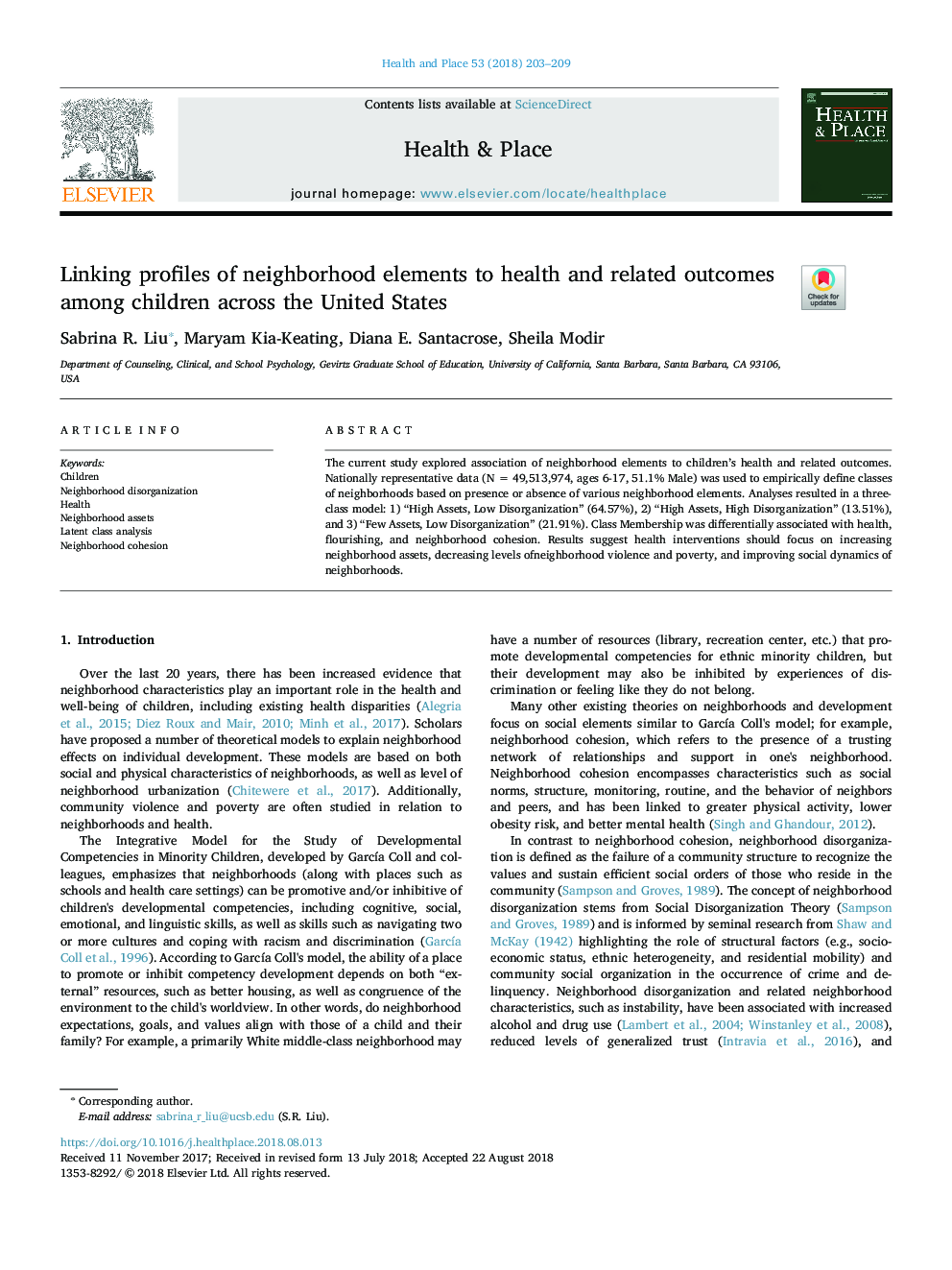| Article ID | Journal | Published Year | Pages | File Type |
|---|---|---|---|---|
| 11005230 | Health & Place | 2018 | 7 Pages |
Abstract
The current study explored association of neighborhood elements to children's health and related outcomes. Nationally representative data (N = 49,513,974, ages 6-17, 51.1% Male) was used to empirically define classes of neighborhoods based on presence or absence of various neighborhood elements. Analyses resulted in a three-class model: 1) “High Assets, Low Disorganization” (64.57%), 2) “High Assets, High Disorganization” (13.51%), and 3) “Few Assets, Low Disorganization” (21.91%). Class Membership was differentially associated with health, flourishing, and neighborhood cohesion. Results suggest health interventions should focus on increasing neighborhood assets, decreasing levels of neighborhood violence and poverty, and improving social dynamics of neighborhoods.
Related Topics
Health Sciences
Medicine and Dentistry
Public Health and Health Policy
Authors
Sabrina R. Liu, Maryam Kia-Keating, Diana E. Santacrose, Sheila Modir,
